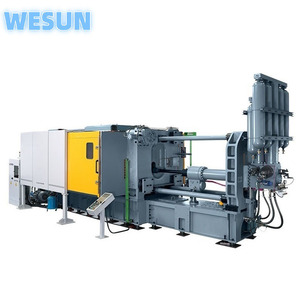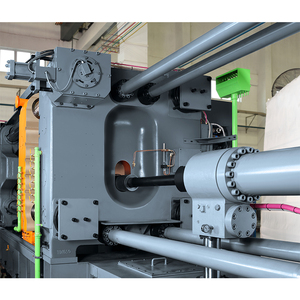
All categories
Featured selections
Trade Assurance
Buyer Central
Help Center
Get the app
Become a supplier

(215 products available)



























Used die sinking EDM machines are available in two basic types, namely RAM (or vertical) EDM and wire EDM:
Die sinking machines are used in the metal industry. When buying used die sinking EDM machines, the specifications are an essential factor to consider. Die sinking machines are usually rated on their workpiece size, X-Y-Z axis travel, electrode size, work tank dimensions, maximum workpiece weight, workpiece material compatibility, and control system. The size of the die-sinking machine’s workpiece is an important specification. Workpieces are usually measured in millimeters. The X-Y-Z axis travel is the distance the machine’s electrode can move in three different directions. The machine’s electrode size is also an important specification. It is used to measure the diameter of the electrode the machine uses. The work tank is the area that holds the workpiece. This specification is important for buyers that want to know how large the workpiece the machine can handle is. The maximum workpiece weight is also an important factor when considering the size of the workpiece the machine can handle. It is usually measured in kilograms.
The control system is an important specification for buyers to understand the type of software the machine uses. Some used die-sinking machines have a computer numerical control (CNC) system. This system allows the machine to cut and shape the material automatically. The EDM process is controlled by the computer’s software. The software program can control the depth of the cut, the location, and the electrode. This allows for precise and accurate cuts. There are different types of CNC control systems available for die-sinking machines. They include the 2-axis, 3-axis, and 5-axis CNC control system. The 5-axis CNC control system is the most advanced and offers more precise movement and flexibility than the 2-axis and 3-axis CNC control systems.
Maintaining a die-sinking machine is an essential part of using the machine. The machine will last for several years if it is properly maintained. Regular and routine maintenance of the machine will also help avoid constant repair costs. The first maintenance tip is to always make sure the machine is clean. Dirt, dust, and debris can build up on the machine over time. It can lead to damage. Cleaning the machine periodically will help prevent damage. It is also important to lubricate the moving parts of the machine. This will help reduce friction and wear. Another important tip is to calibrate the machine regularly. Regular calibration will ensure accurate performance of the machine. Lastly, all safety systems should be inspected periodically and tested. This includes emergency stop buttons, safety guards, and interlocks. These systems are important to protect the operator from harm.
Used die sinking EDM machines are crucial equipment in various industries and applications. Here are some common scenarios where they are used.
Used die sinking EDM machines are commonly used in the tool and die making industry. These machines can achieve extremely high precision, making them suitable for creating complex dies, molds, and tooling components. They are used to produce items like metal stamping dies, injection molds, and extrusion dies. Their accuracy allows manufacturers to create intricate designs and cavities that meet tight tolerance requirements.
Used die sinking EDM machines are widely used in the aerospace and aviation industries. These machines can cut through the toughest aerospace materials, such as titanium alloys, superalloys, and composites. They are used in the manufacture of aircraft components, like turbine blades, engine parts, and structural elements. The machines' ability to produce high-precision parts with excellent surface finishes makes them invaluable in an industry where safety and performance are paramount.
Used die sinking EDM machines play a critical role in the automotive industry. They are commonly used for manufacturing automotive parts, such as engine components, transmission parts, and fuel system elements. These machines can produce high-precision automotive parts that meet the industry's stringent quality standards. They are able to create intricate features with tight tolerances, ensuring the reliability and performance of the final products.
Used die sinking EDM machines are essential in the manufacturing of medical devices. They are used to produce precision components for medical devices, such as implants, surgical instruments, and diagnostic equipment. These machines can achieve the precise dimensions and intricate geometries required for medical device components. Their ability to work with a wide range of materials makes them suitable for producing components from metals, plastics, and other bio-compatible materials.
Used die sinking EDM machines are widely used in the electronics industry. They are commonly used for manufacturing electronic components, such as connectors, lead frames, and microelectromechanical systems (MEMS). These machines can produce small and delicate electronic components with high precision. They are able to create features like fine holes, slots, and channels that are required for electronic devices to function properly.
Purchasing used electrical discharge machines requires a specific set of skills and knowledge to ensure that the machines will perform as expected. Here are some tips on how to choose used die sinking EDM machines.
Thoroughly inspect the die-sinking EDM machine to evaluate its condition. Check for visible signs of damage, such as dents, cracks, or corrosion. Inspect critical components, such as the worktable, electrode, and power supply, to ensure they are in good working order. Ask the seller for a detailed maintenance record and inquire about any repairs or upgrades that have been made.
Understanding the machine's age and usage is important when choosing a used die-sinking EDM. Check for the machine's manufacturing date and inquire about its usage history. Machines that have been used heavily may have more wear and tear on critical components, potentially affecting performance and lifespan. Additionally, older machines may lack certain advanced features and technologies found in newer models.
When selecting a used die-sinking EDM machine, it's critical to assess its work envelope and cutting capabilities. Consider the machine's maximum workpiece dimensions, as well as factors such as maximum current, electrode sizes, and positional accuracy. Select a machine that meets the requirements of the intended application and workpiece materials.
When selecting a used die-sinking EDM machine, it's critical to verify its accuracy and precision. Consider the machine's control system, probing capabilities, and any additional features that may contribute to precise machining. Evaluating the machine's accuracy and precision through test cuts and inspection of sample workpieces is also recommended.
When choosing a used die-sinking EDM machine, it's essential to review the software and automation features. Consider the machine's control software for programming capabilities, user interfaces, and integration options. Additionally, assess any automation accessories, such as tool changers or workpiece loading systems. Select a machine with software and automation that aligns with production requirements and workflow.
Q1: What is the difference between RAM and RAM-less die-sinking EDM machines?
A1: The primary point of difference between RAM and RAM-less die-sinking EDM machines is the way the electrode is controlled. RAM die-sinking EDM machines utilize a vertical RAM (electrode) that is connected to a servo system to control its movement, while the RAM-less type uses a pulse generator to control the movement of the electrode, which is usually a thin metallic wire. RAM die-sinking EDM machines are widely used and can handle both small and large workpieces, while RAM-less machines are better suited for delicate or intricate jobs.
Q2: Is it possible to upgrade a used EDM machine?
A2: Yes! It is definitely possible to upgrade a used EDM machine. Some upgrade options to consider are installing new control systems or adding automation features like robotic arms or workpiece changers. Upgrading an EDM machine can improve its performance and functionality, bringing it in line with current industry requirements.
Q3: What are the main benefits of buying a used EDM machine?
A3: One of the main benefits of buying a used EDM machine is the cost savings. The price of new EDM machines can be quite expensive, but opting for a used machine can offer significant cost savings without compromising on performance. Additionally, buying used machines helps to reduce waste and conserve resources by giving the machine a second life. This also contributes to sustainability.
Q4: What are the cutting techniques used by EDM machines?
A4: The two most common cutting techniques used in an EDM machine are the sinker or die-sinking method and the wire-cut method. In the die-sinking method, an electrode in the shape of the final desired cut is used to erode the work piece. On the other hand, the wire-cut method utilizes a thin wire to cut the work piece. Both techniques are very precise and provide high-quality finishing.